Aquatic Gartersnakes
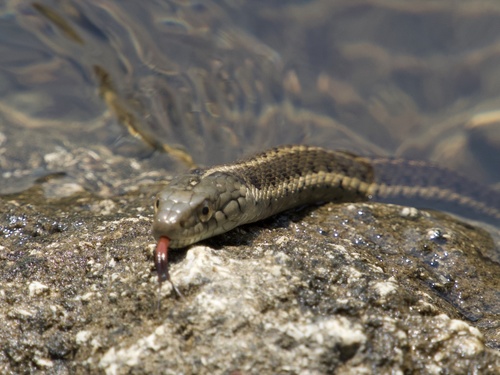
(This applies to all the common gartersnakes in this list. If anything changes, it will be listed below that snake.)
Average length: 18-40 in.
Juveniles: Lighter yellow stripes, and sometimes it appears as if they have none.
Habitats:They live around water such as lakes, ponds, streams, or rivers and in the woods.
Venom ferocity: Although it is thought that gartersnakes have no venom, they do, although it is not very notable. The effects are mild and only irritate the skin by leaving small rashes, bruises, and/or swelling. Still good to avoid a bit, however.
Note: Oregon Gartersnakes have a tendency to repeatedly strike if severely threatened or picked up. Usually escape into water. DO NOT EAT; this subspecies of snake eats a kind of toxic newt (Pacific Newt), and the toxins have been found to spread into the skin.
Fun fact: Sometimes in the water they will flick their tongue above the water to lure prey through the illusion of an insect.
Oregon Gartersnake

Juveniles: Same as adults
Santa Cruz Gartersnake
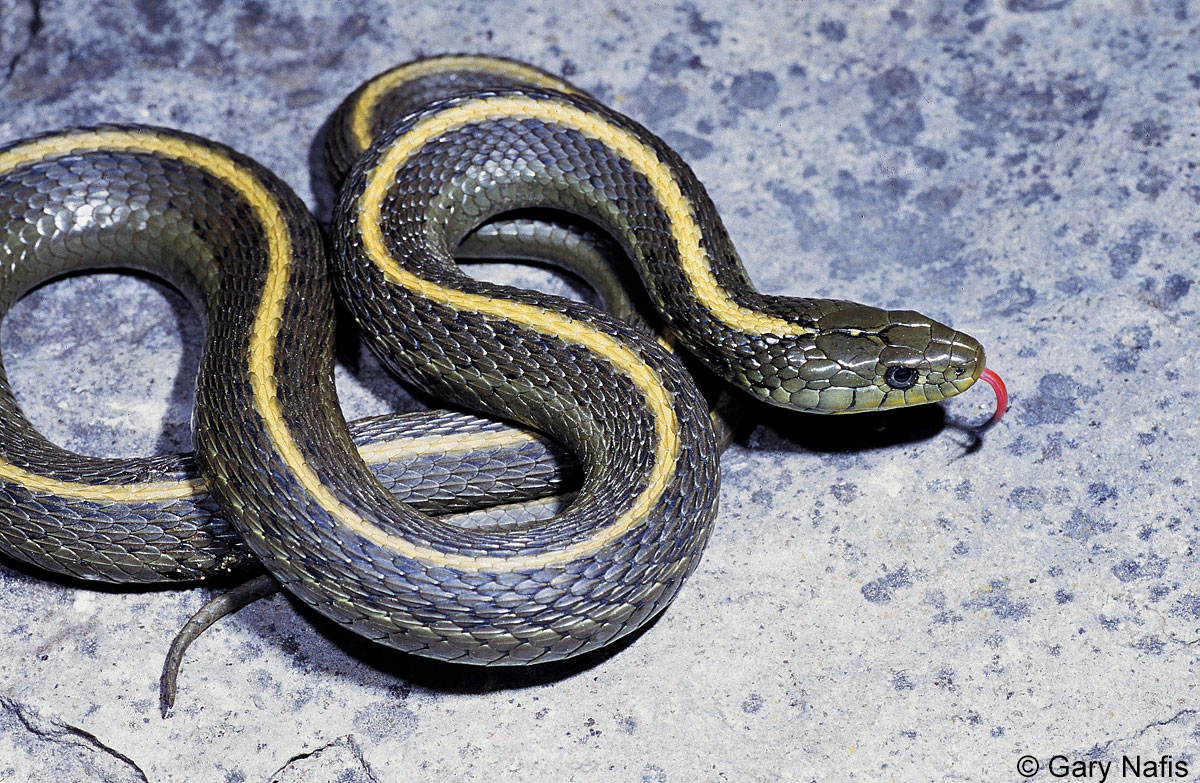
www.CaliforniaHerps.com
Juveniles: More brown/olive/tan than the black color the adults possess.
Diablo Range Gartersnake

Pattern: Stripes can be yellow or orange
Juveniles: Face is rounder
Sierra Gartersnake
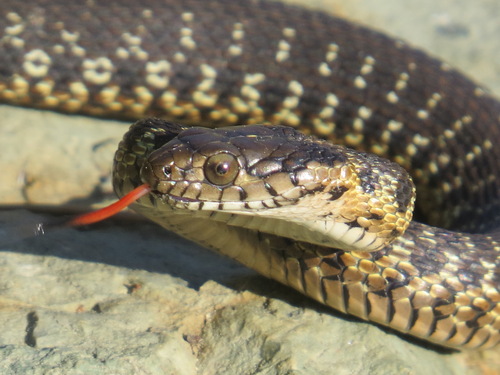
Juveniles: They have less spots and less definition to certain colors.
Common Gartersnakes
(This applies to all the common gartersnakes in this list. If anything changes, it will be listed below that snake.)
Average length: 18-55 in.
Habitats: Forests, grasslands, marshes, fields and farmlands, and often times are near ponds and streams.
Venom ferocity: Although it is thought that gartersnakes have no venom, they do. The effects are mild and only irritate the skin by leaving small rashes or bruises.
San Francisco Gartersnake
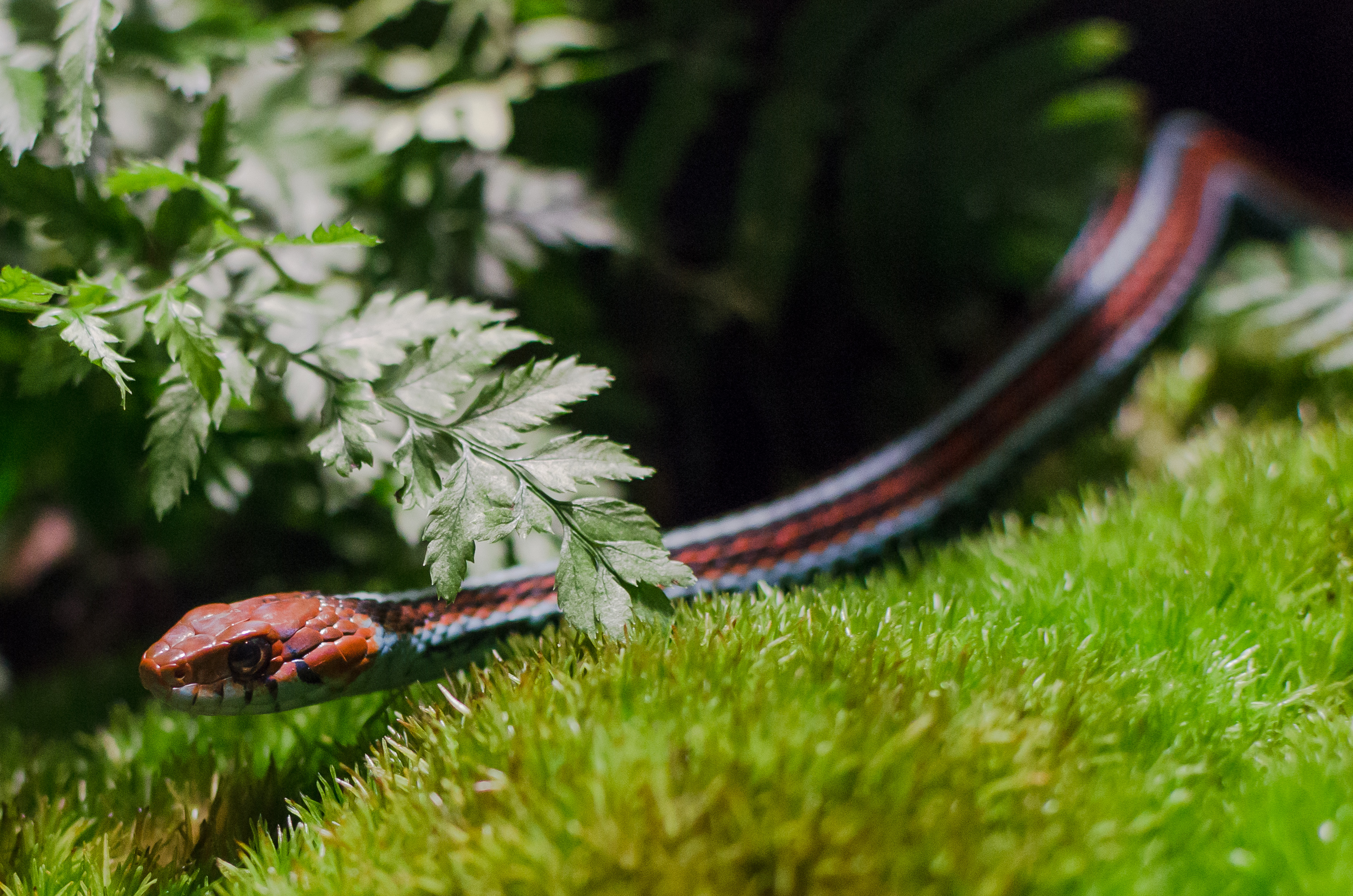
Juveniles: Juveniles look the same as the adults except for the head, which is more rounded than long.
California Red-sided Gartersnake
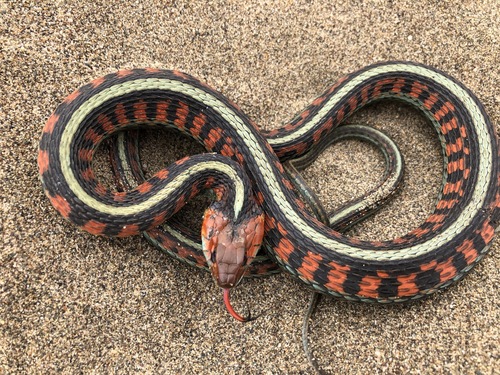
Juveniles: They look the same as the adults, but can be a bit shinier and their heads a bit rounder.
Valley Gartersnake
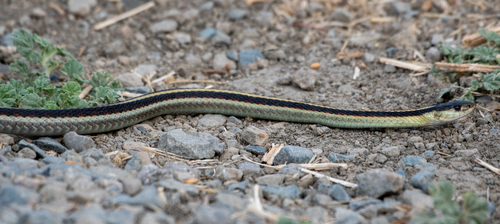
Juveniles: They look the same as the adults.
NOTE: Some valley gartersnakes may have red stripes on them.
Western Terrestrial Gartersnakes
(This applies to all the common gartersnakes in this list. If anything changes, it will be listed below that snake.)
Average length: 18-43 in.
Habitats: Forests, brush, grassy areas, and tend to be near water.
Venom ferocity: Although it is thought that gartersnakes have no venom, they do. The effects are mild and only irritate the skin by leaving small rashes or bruises.
Wandering Gartersnake

Juveniles: Same as the adults.
NOTE: May be a darker black or have brighter/more yellow.
Coast Gartersnake
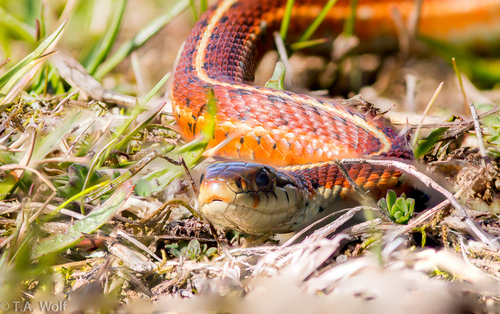
Juveniles: May have brighter coloring.
NOTE: These snakes may also be black with yellow stripes or brown with yellow and/or red stripes, and both have red tints to their scales.
Mountain Gartersnake
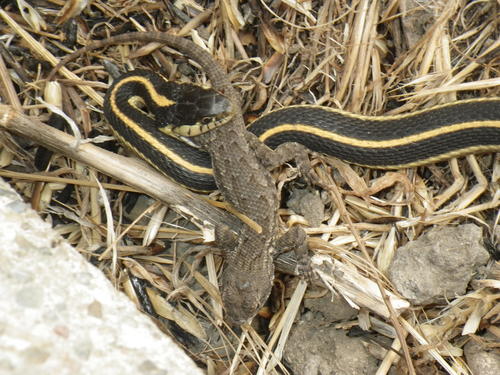
Juveniles: Same as adults.
NOTE: May have blue stripes rather than yellow stripes.
Other
Here are two other snakes, one of which is a species and the other species.
Marcy’s Checkered Gartersnake (Subspecies of Checkered Gartersnake)
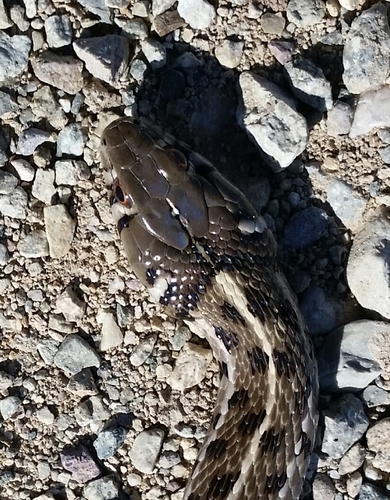
Average length: 13-42 in.
Habitats: Grasslands, desert, and/or near water.
Juveniles: Same as the adults.
Venom ferocity: Although it is thought that gartersnakes have no venom, they do. The effects are mild and only irritate the skin by leaving small rashes or bruises.
Northwestern Gartersnake
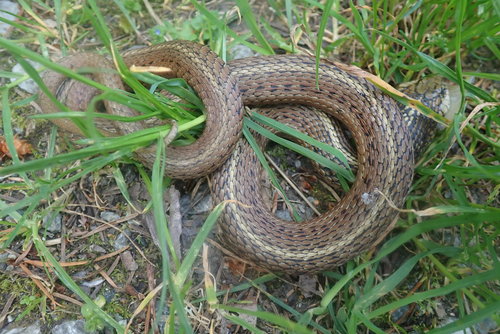
Average length: 13-38 in.
Habitats: In lots of vegetation and/or sunny areas such as meadows.
Juveniles: Same as the adults but can have lighter colors.
NOTE: Some may have red or yellow stripes and/or have a black body.
